Haiti, Israel most likely to let journalists’ murders go unpunished, CPJ 2024 impunity index shows
In This Report
An overwhelming lack of justice for murdered journalists is a major threat to press freedom. More than a decade after the United Nations declared an International Day to End Impunity for Crimes against Journalists – and more than 30 years after CPJ began documenting these killings – nearly 80% remain unsolved. A CPJ report.
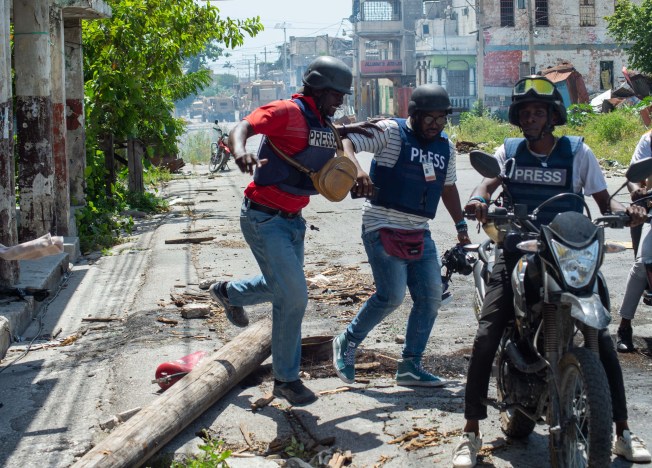
Two small nations – Haiti and Israel – are now the world’s biggest offenders in letting journalists’ murderers go unpunished, according to CPJ’s 2024 Global Impunity Index, which measures unsolved murders in proportion to a country’s population. This year is the first time Israel has appeared in CPJ’s index since its inception in 2008.
In Haiti, ranked No. 1, a weak-to-nonexistent judiciary, gang violence, poverty, and political instability have contributed to the failure to hold killers to account. Haiti joined the index for the first time in 2023, in third place, as criminal gangs took over large parts of the country following the 2021 assassination of President Jovenel Moïse, plunging the press into an “existential crisis” that has forced many to cut staff or close altogether.
Israel’s targeted killing of journalists in Gaza and Lebanon during a relentless war drove it up to the No. 2 spot on this year’s index, which covers the period from September 1, 2014, to August 31, 2024. CPJ has documented the murder of five journalists – four Palestinian and one Lebanese – since the war began, and is investigating the possible targeted murders of 10 more journalists. Given the challenges of documenting the war, the number may be far higher. Overall, Israel has killed a record number of Palestinian journalists since the war began on October 7, 2023.
How CPJ defines ‘murder’ and ‘impunity’
CPJ has been recording data on journalist killings and imprisonment since 1992. Our methodology used since that time across all countries is as follows:
Murder
Only cases defined as “murder” are included in the impunity index. CPJ defines “murder” as the killing of a journalist, whether premeditated or spontaneous, when our research enables us to say with reasonable certainty that the individual was killed in direct connection to their work as a journalist. In many cases, we are not able to say conclusively that the killing was connected with someone’s work (for example, in countries with high levels of corruption and crime, such as Mexico, or during wars with high levels of general civilian casualties, such as the Israel-Gaza war). The fact someone has not been classified as having been “murdered” on the CPJ database should not be taken to mean that CPJ considers the individual to have been lawfully killed.
Impunity
Impunity occurs when individuals or nations are not held responsible in these murders. Full impunity, which our impunity index measures, means no one has been held to account in a journalist’s deliberate murder.
Other classifications
Please see CPJ’s methodology for further details on classifications.
CPJ continually researches and updates cases and can change classifications as more evidence is gathered.
Mourners carry the body of Al Jazeera Arabic journalist Ismail Al Ghoul, killed along with camera operator Rami Al Refee in an Israeli drone strike on July 31, 2024.
(Photo: AFP Omar Al-Qattaa)
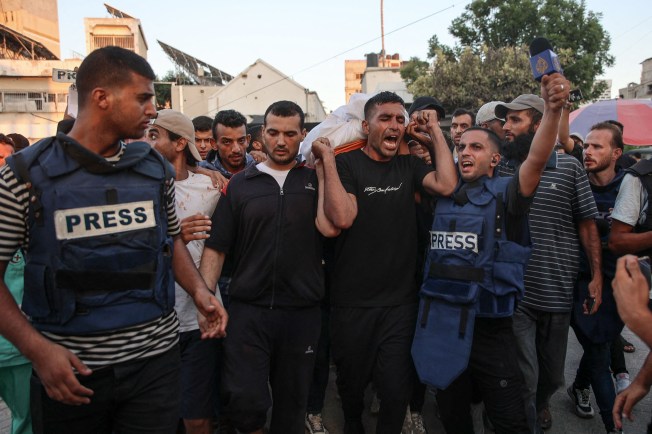
Because CPJ’s impunity index measures the number of unsolved journalist murders as a percentage of each country’s population, Israel and the occupied Palestinian territory’s larger population puts it behind Haiti on a proportional basis, even though it has more cases. Only nations with five or more unsolved murders are included in the index. Israel was not included in last year’s index because the war in Gaza started after the index cutoff date of August 31, 2023. See more on the index methodology here.
More on impunity
- After 3 decades, 30 murdered journalists still have no justice
- More impunity with a wave of 2024 killings in Pakistan
- Explore CPJ’s global database
Globally, CPJ’s index found that the vast majority – 77% – of journalists’ murderers have escaped with full impunity, meaning no one has been held to account for their murders, so they remain unsolved. That’s an improvement from the 90% rate CPJ recorded a decade ago and slightly better than the 78% CPJ documented in 2023, but certainly no reason for celebration. Impunity has become entrenched around the world, with about four out of five killers of journalists consistently going unpunished.
While Haiti and Israel have overtaken long-time occupants of the top spots on the impunity index, that does not mean that other offenders have improved their bleak record in achieving justice for journalists.
Somalia, Syria, and South Sudan round out the top five worst offenders of 2024. All three have appeared on CPJ’s index for at least a decade; Somalia is one of six countries that have been included in all 17 years of the index’s existence, underscoring the persistent nature of impunity.
Entrenched impunity, even in democracies
The countries are spread across continents, but all on the index suffer from one or more of the corrosive factors that allow journalists’ killers to evade justice: wars, insurgencies, authoritarian governments, criminal gangs, and a lack of political and judicial action. The effect on press freedom is pernicious. The longer these conditions last, the more likely it is for impunity to become entrenched and for journalists to be forced to flee their home countries, self-censor, or abandon their profession entirely.
Democracies are not immune to this disturbing trend.
Mexico recorded the highest overall number of unpunished murders of journalists – 21 – during the index period and ranks eighth on the index because of its sizable population. Long one of the world’s most dangerous countries for the media, Mexico reported a rise in deadly violence in 2024 after dropping from record levels in 2022. A joint report by CPJ and Amnesty International found that the Mexican government’s failure to adequately address the shortcomings of the federal Mechanism for the Protection of Human Rights Defenders and Journalists limits its capacity to prevent violence against reporters. Rampant corruption and organized crime often make it difficult to determine whether a journalist was directly targeted for their work.
In Brazil, which has had a democratic system since the 1980s, corruption and censorship remain pervasive, contributing to the deaths of 10 journalists in the index period. Most of the cases occurred outside major urban centers and involved journalists from small local media outlets (5), radio stations (3), and freelancers (2). Impunity is extensive; even cases with international repercussions, such as the 2022 murder of Dom Phillips in the Brazilian Amazon, remain unsolved. Three defendants have been arrested and are due to stand trial. The alleged mastermind has also been arrested, but justice has yet to be served.
CPJ 2024 Global Impunity Index rankings
| Index rank | Country | Unsolved murders | Population (in millions)* | Years on index |
|---|---|---|---|---|
| 1 | Haiti | 7 | 11.7 | 2 |
| 2 | Israel and Occupied Palestinian Territory* | 8 | 14.9 | 1 |
| 3 | Somalia | 9 | 18.1 | 17 |
| 4 | Syria | 11 | 23.2 | 11 |
| 5 | South Sudan | 5 | 11.1 | 10 |
| 6 | Afghanistan | 18 | 42.2 | 16 |
| 7 | Iraq | 11 | 45.5 | 17 |
| 8 | Mexico | 21 | 128.5 | 17 |
| 9 | Philippines | 18 | 117.3 | 17 |
| 10 | Myanmar | 8 | 54.6 | 3 |
| 11 | Brazil | 10 | 216.4 | 15 |
| 12 | Pakistan | 8 | 240.5 | 17 |
| 13 | India | 19 | 1428.6 | 17 |
*The total for Israel and the Occupied Palestinian Territory includes the murder of Reuters journalist Issam Abdallah, who was killed in Lebanon by Israeli forces firing from inside Israel.
Many other nations on the index have consistently seen journalists’ killers get away with murder, including:
- Pakistan has appeared on the impunity index every year since it began in 2008. Improper evidence collection, limited resources, political interference, and corruption have repeatedly resulted in ineffective investigations and prosecutions for journalist killings. CPJ has confirmed that at least two Pakistani journalists were killed in direct retaliation for their work so far in 2024, and is investigating four other possible work-related killings.
- The Philippines, also on the index every year since 2008 and frequently in the No. 1 or No. 2 spot, has logged an unsolved murder of a journalist almost every year since 1992. Full justice remains elusive for the 32 reporters and media workers killed in the Maguindanao massacre 15 years ago – one of the deadliest attacks on the press – as well as journalists like Gerry Ortega, a radio broadcaster killed in 2011.
- Iraq ended its six-year hiatus in work-related murders in 2024 with the targeting of two women journalists. Islamic State (IS) militants and Turkish anti-Kurdish forces were behind most of the 11 murders in the index period. A 2024 CPJ report to the United Nations noted that crimes against journalists are rarely investigated, which has fueled continuing attacks on the press. As the violence ticks up, media restrictions, censorship, and threats against journalists – both in Baghdad and in Iraqi Kurdistan – continue apace.
- Afghanistan has recorded 18 journalists murdered in the last decade, with the militant Islamic State claiming responsibility for 13 deaths, most notably in a 2018 double suicide bombing. The Taliban, despite its opposition to the IS, has not pursued justice for those killed and continues to harass, attack, and detain journalists and ban news outlets.
- India has been on the index every year since its inception, with crime playing a predominant role in the 19 journalist murders over the past decade. The victims were targeted for reporting on various topics, from politics to the environment. The latest murder occurred during India’s national elections this year, which also saw fresh election violence and new legislation likely to stifle press freedom.
Like Haiti and Israel, Myanmar is a newer arrival to the index, making its first appearance in 2022. The number of journalists murdered with impunity in Myanmar climbed to eight, with three new cases documented in 2024. The surge in killings comes amid a harsh crackdown on the free press, as the military has jailed dozens of journalists and banned over a dozen independent media outlets since seizing power in 2021.
International investigative force could bolster UN laws against journalist impunity
In 2013 – five years after CPJ launched its first impunity index – the International Day to End Impunity for Crimes Against Journalists was created and has served as an advocacy tool to highlight countries where impunity for murders of journalists is entrenched.
A body of United Nations resolutions supporting journalists followed, chief among them, U.N. Security Council Resolution 2222 (2015), establishing that journalists are civilians and are protected by International Law. Deliberately targeting civilians constitutes a war crime. In 2017, the U.N. adopted Human Rights Council Resolution 33/2, which mandates member states to “prevent, protect and prosecute” in order to end impunity.
Despite international frameworks intended to tackle impunity, the lack of meaningful improvement in accountability for journalist killings in the past decades indicates more needs to be done to hold perpetrators to account. In December 2020, CPJ – along with partners Reporters Without Borders and Free Press Unlimited – launched the Safer World for the Truth project, which published reports into cold cases of journalist killings. These reports showed that a common failing was that investigators neglected to follow international standards – specifically U.N. standards known as the Minnesota Protocol – at the local level in order to ensure accountability. Flawed police investigations, substandard evidence collection, and missteps in prosecutions were all frequent features of these cases.
As a result, CPJ is actively advocating with press freedom partners and others for an international investigative task force focused on crimes against journalists. A blueprint for a body, initially proposed in 2020 by a panel of legal experts, could deploy resources or advise in situations where local law enforcement may be lacking either capacity or political will to investigate crimes against journalists. A feasibility study has been carried out by the Netherlands.
Impunity is as endemic as ever
In this index period, CPJ identified 241 killings where there was clear evidence the murders were directly linked to a person’s work. Less than 4% of those murdered achieved full justice; 19% obtained partial justice, meaning some of their killers were held to account; and the remaining 77% received no justice.
Since 1992, CPJ has classified 974 journalist killings as murder, with only 5% receiving full justice, and 79% remaining unsolved. The figures are largely unchanged this year; as are the dangers journalists face. Impunity is as endemic as ever, and the families and colleagues of murdered journalists have little chance of seeing anyone held responsible.
Nowhere is this reality more grim than in the cases of 30 journalists whose murderers are still free more than 30 years after CPJ documented their 1992 killings.
Only cases involving complete impunity are listed in our index; those where some have been convicted, but other suspects remain free – partial impunity – are not.
Journalists behind the numbers
Behind the calculations and classifications are the journalists, and their grieving colleagues, families, and friends. Here are just a few journalists murdered during the index period whose killers have not been held to account:
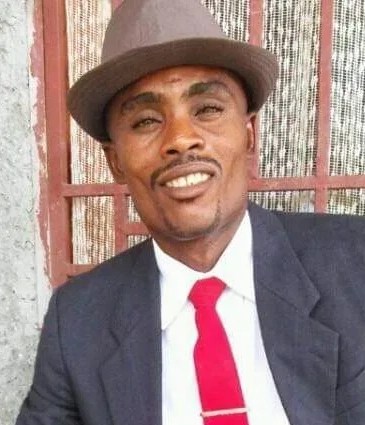
Haitian radio journalist and host Gerry Tesse, whose mutilated remains were found six days after his October 2022 disappearance, was determined by CPJ to have been murdered in retaliation for his work based on new information. Shortly before his death, Tesse went on the radio to describe a plot to have him killed by a powerful prosecutor facing corruption allegations. Tesse was a persistent and outspoken critic of corruption and abuses of power.

Sagal Salad Osman, a producer and presenter for Radio Mogadishu, was murdered by Somali assailants in 2016 in what police said was a targeted killing by the militant group Al-Shabaab. Militants have a history of targeting journalists for Radio Mogadishu and other state media, according to CPJ research. Women in public roles in particular have been targeted, the Strategic Initiative for Women in the Horn of Africa found in a 2016 report. Also a university student, Osman produced children’s programming for the radio outlet, according to a journalist who asked to remain anonymous.
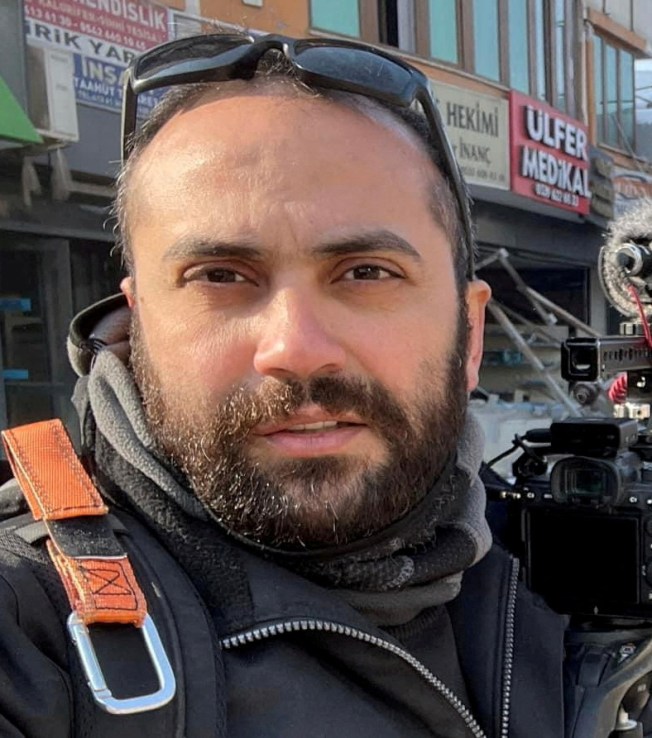
The five journalists who CPJ believes were clearly and deliberately targeted as journalists by Israel are: Issam Abdallah, a Lebanese videographer for Reuters killed on October 13, 2023, Hamza Al Dahdouh and Mustafa Thuraya, killed on January 7 in their car as they returned from an assignment, and Ismail Al Ghoul, and Rami Al Refee, killed on July 31 in an Israeli drone strike. All were reporting on the war, and three of the five were wearing “Press” vests at the time they were killed.

Mexico’s Pamela Montenegro, a journalist, satirist, and YouTube influencer, was fatally shot in 2018 by two assailants at a restaurant that she and her husband owned. She was widely known by her online persona “La Nana Pelucas” (The Grandma in Wigs). Both as editor of the online El Sillón magazine and as La Nana Pelucas, Montenegro covered local politics in the beachside city of Acapulco in Guerrero State, and frequently mocked local politicians.
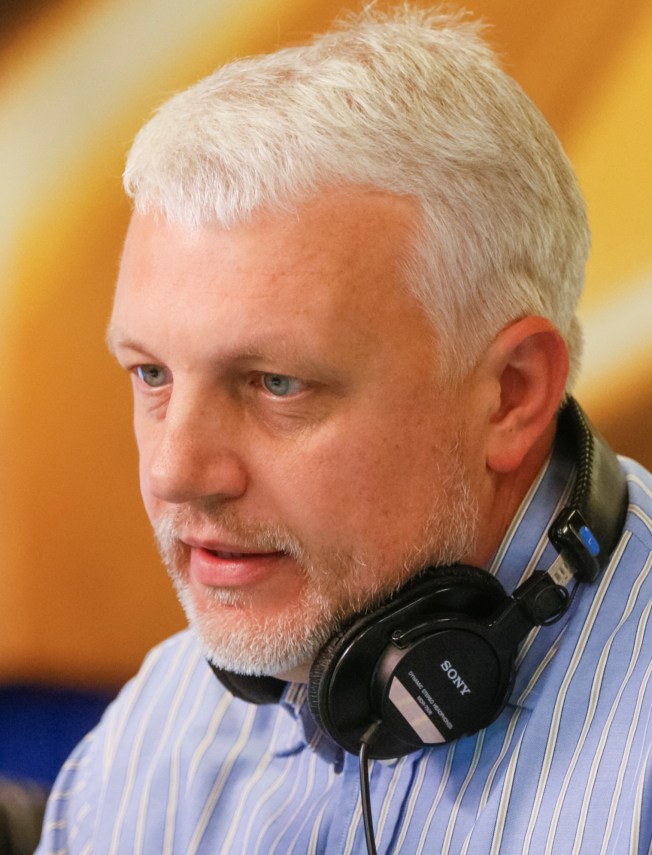
Pavel Sheremet, a 1998 winner of CPJ’s International Press Freedom Award, was a Belarusian-born, Russian citizen who was killed by a car bomb in 2016 in Ukraine, where he reported and hosted a radio show commenting on criminal gang activity and on police and government corruption. The year before he was murdered, Sheremet’s friends told journalists that he believed he was being followed in Kyiv, and he told Reuters in 2015 that he felt unsafe when visiting Moscow. Five suspects were named in 2019, and both Russia’s Federal Security Service and Belarus’ KGB have been blamed for the bombing. But no one has faced trial for Sheremet’s murder.

The murders in Myanmar of reporters Htet Myat Thu, Win Htut Oo, and Myat Thu Tan in 2024 mark the worst year in the country for impunity. Seven of eight journalists murdered in the index period were killed after the 2021 coup, after which the junta jailed dozens of journalists and used broad anti-state laws to quash independent reporting.. Htet Myat Thu, a well-known journalist previously shot and arrested while reporting on an anti-coup protest, was killed in a raid on his family home, along with Win Htut Oo, a close childhood friend with the exiled Democratic Voice of Burma. Myat Thu Tan was killed in detention while being held for critical posts he made on Facebook, sources said.
More about the top 5 countries on the index
Haiti
Haiti’s rise to the top of the index this year follows the unsolved murders of seven journalists since 2019.
In 2024, Haiti experienced possibly the most catastrophic year in its recent history after a coalition of armed gangs effectively declared open warfare on the state in late February, breaking into the largest prison in the capital, Port-au-Prince, and releasing more than 4,000 inmates, many violent criminals. The acting prime minister, Ariel Henry, was forced to resign, and a transitional government was installed with the support of the U.S. and the regional CARICOM group of Caribbean countries.
But, even after the deployment of a 400-strong Kenyan-led, international security force, large swaths of Port-au-Prince remain under gang control, a wasteland of destroyed buildings and a populace experiencing crisis-level hunger.
The economic chaos and ruin have forced many journalists to flee and have led many Haitian media outlets to suspend operations or reduce their staff, with some on the brink of closure.
At the same time, the political instability has only exacerbated Haiti’s dysfunctional judiciary, which resulted last year in the country becoming the first in the Caribbean to be included on CPJ’s annual list of nations where killers get away with murder. And now, it has risen to be designated the worst nation globally for impunity in CPJ’s 2024 index.
Israel
In the most dangerous and unprecedented war for journalists CPJ has ever recorded, Israel has killed at least 126 journalists and media workers, almost all Palestinian, targeting at least five of those journalists in relation to their work and propelling the small nation to make its first appearance on CPJ’s impunity index. Israel has denied it directly targets journalists in the war, but its military has a longstanding record of killing journalists. In its “Deadly Pattern” report published before the war, CPJ found that no one has been held accountable for the killings of 20 journalists by military fire in the last 22 years.
This May 2023 report foreshadowed the country’s response to the murders of the five journalists in the Israel-Gaza war. In one instance, multiple independent investigations found Israel deliberately fired on journalists in southern Lebanon on October 13, 2023, killing Reuters journalist Issam Abdallah and wounding six others. Despite these exhaustive and detailed findings, Israel has not taken any action.
Somalia
The worst offender on the index from 2015 to 2022, and on the index every year since its inception, Somalia dropped to the No. 2 spot below Syria in 2023, and now ranks No. 3. Most of the nine journalists during the index period died between 2014 and 2018, believed to have been killed by Al-Shabaab, an insurgent group that seeks to establish an Islamic state in Somalia. Despite this slight drop, journalists still face high risks. Somalia remains unstable amid an ongoing offensive against Al-Shabaab. Covering this protracted conflict remains dangerous and even deadly. The media are severely hampered in their reporting as journalists continue to face arrests, threats, and harassment.
Syria
Eleven journalists were murdered with complete impunity in Syria during the 2024 index period. Seven died between 2014 and 2016, as the initial uprising against the Bashar al-Assad regime widened into a full-scale war involving regional and global powers and the militant Islamic State began seizing control of Syrian territory. IS is believed to have murdered most of the seven killed between 2014 and 2016. Although fighting has eased since Assad regained control of most of the country, Syrian media have continued to sustain blow after blow, as numerous journalists have been forced to flee into exile, and government authorities and local leaders continue to harass, threaten, or arrest journalists.
South Sudan
Five journalists murdered in South Sudan in 2015 have kept this nation on the impunity index since their killings, showing there has been little to no effort in obtaining justice for their murders. These five, killed during South Sudan’s 2013-2020 civil war, are emblematic of journalists under pressure throughout a nation that has been plagued by instability since independence in 2011. CPJ has documented numerous instances of harassment, detention, and jailing of journalists, and the crossfire death of a war reporter in recent years.
In September 2024, South Sudan suffered a setback in its post-civil war transition when the mandate of the transitional government was extended for a further two years, and elections were postponed. Continued political uncertainty and lingering conflict in parts of South Sudan have grave consequences for the safety of civilians, including journalists. Members of the press in South Sudan continue to face arrests for their work and the United Nations Commission on Human Rights in South Sudan has reported widespread censorship and self-censorship of the media, including of transition-related coverage.
Impunity index methodology
CPJ’s Global Impunity Index calculates the number of unsolved journalist murders as a percentage of each country’s population. For this index, CPJ examined journalist murders that occurred between September 1, 2014, and August 31, 2024, and remain unsolved. Only those nations with five or more unsolved cases are included on the index. CPJ defines murder as the targeted killing of a journalist, whether premeditated or spontaneous, in direct connection to the journalist’s work. Cases are considered unsolved when no convictions have been obtained, even if suspects have been identified and are in custody. Cases in which some but not all suspects have been convicted are classified as partial impunity. Cases in which the suspected perpetrators were killed during apprehension also are categorized as partial impunity. The index only tallies murders that have been carried out with complete impunity. It does not include those for which partial justice has been achieved. Population data from the World Bank’s 2023 World Development Indicators, viewed in September 2024, were used in calculating each country’s rating. Regions within a nation that are partially controlled or occupied by that nation, such as the Kurdistan Region of Iraq, and Gaza and Israel, are included in that country’s population figures.
Editor’s note: The impunity index methodology was updated to clarify the timeframe when CPJ viewed World Bank population data.